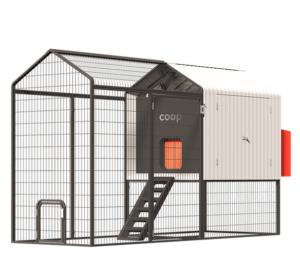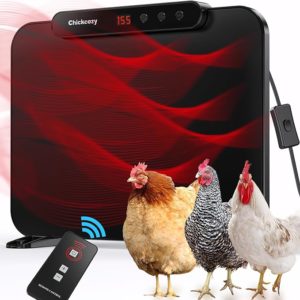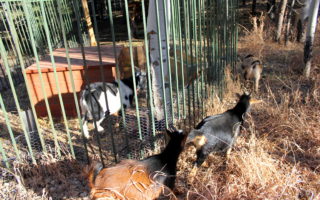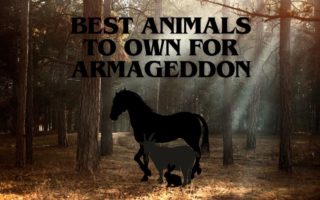Picking a breed of chicken can be pretty simple. You’ll first want to determine if you’re after an egg laying, meat, dual, or ornamental breed. Next, you’ll want to choose which breed will do best in your climate, especially if you live in extreme heat or cold. In my experience the heat/cold tolerance isn’t a huge deal as long as you provide their basic needs like shade in the summer or a proper coop for the winter.
*Below are some of the different breeds out there listed by purpose and where they fall on the hot/cold scale, some do well in both. Numbers next to the name indicate how many eggs they lay annually.
**FINALLY, A Smart Coop For Chickens (CLICK HERE)**
Egg Laying Breeds:
Cold Tolerant: Americuana 250, Silkie 100
Heat Tolerant:
Egyptian Fayoumi 150, Leghorn 280, Andalusian 165, Silkie 100
Meat Breeds:
Cold Tolerant: Brahma 150, Jersey Giant 260, Delaware 280,
Heat Tolerant: Brahma 150, Delaware 280
Dual Meat/Egg Breeds:
Cold Tolerant: Australorp 250, Barnevelder 180, Buckeye 200, Buff Orpington 190, Dominique 230, Cuckoo Marans 150, Barred Rock 280, New Hampshire Red 280, Speckled Sussex 250, Rhode Island Red 260, Wyandotte 200, Russian Orlof 104
Heat Tolerant: Australorp 250, Barred Rock 280, New Hampshire Red 280, Rhode Island Red 260, Speckled Sussex 250
Ornamental:
Cold Tolerant: Cochin 160, Faverolle 240, Welsummer 180, Sebright 52, Sumatra 100, Ayam Cemani 80
Heat Tolerant: Frizzles, Welsummer 180, Polish 200
Breeds We’ve Tried: I like to experiment and see what cool breeds are out there so we’ve had quite the array including Golden Comet, Black Australorp, Barred Rock, Buff Orpington, Speckled Sussex, Jersey Giant, Egyptian Fayoumi, Barnevelder, Buff Orpington, White Laced Red Cornish, Blue Andalusian, Wyandotte’s, Sebright, Silkie, Ayam Cemani.
I tend to go for the dual-purpose breeds as they tend to be all around hardy birds. The best breeds I’ve settled on for our homestead as a working farm bird are . . .
Speckled Sussex: These are my number one pick for our homestead as they’re friendly, good layers, good for meat once their egg production drops, they’ve gone broody pretty well for us, and most of all their coloring is the perfect camouflage from predators.

Wyandotte’s: These are my second favorite pick as they are another friendly, dual purpose breed. They come in multiple color patterns, and best of all they have the smaller combs that are closer to the head so they are less likely to suffer from frostbite during our cold winters.

Black Australorp/Jersey Giant: These are both very friendly breeds and because they’re both black our hope is that as we have so many crows flying around here that the black chickens just blend in. So far so good!

Honorable Mentions: These are birds that don’t necessarily contribute anything to the farm but are fun to have mixed into the flock. These have been the Silkie’s, Sebrights, and Ayam Cemani. They’ve been entertaining to watch and are full of character.
………………..


Breeds We Avoid: Through experience I’ve learned to avoid the lighter colored breeds such as Buff Orpingtons as they are more easily visible to predators, especially birds of prey.
I also avoid breeds that have large combs as our winters are pretty harsh and the birds are susceptible to frostbite.
They only breed I’ve refused to try so far are Rhode Island Reds. We had read that they are more of an aggressive breed and are known for bullying. On top of that our neighbors did try out 20 Rhode Island Red pullets and as soon as they were all grown up they began tearing out each other’s feathers and now look absolutely horrible.









